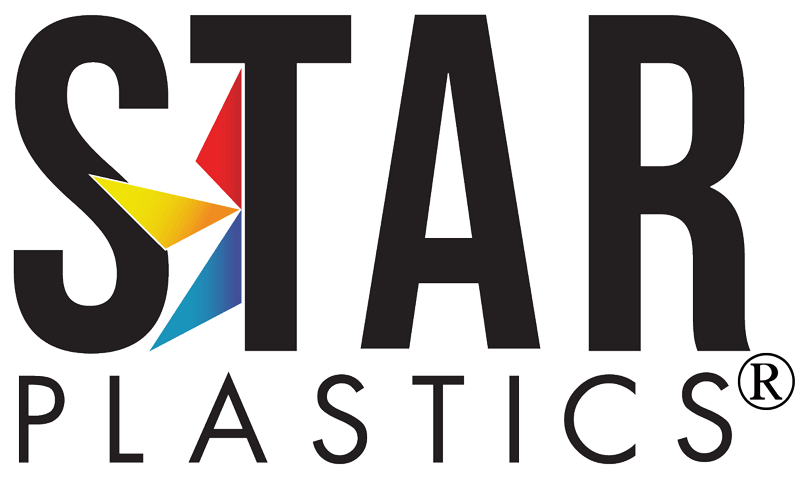October 2025 | Market Update
Tariff Battles, Fed Rate Cut, and Trade Realignments
From Chuck Hoop, Business Director, Star Plastics
Supreme Court Agrees to Fast-Track Trump’s Tariff Appeal
The Wall Street Journal reported in mid-September that the Supreme Court has agreed to ‘fast-track’ the Trump administration’s appeal to uphold its global tariffs, a central part of the president’s economic agenda. Arguments are scheduled for November, with a ruling possible before year-end. This marks the first major test of a Trump second-term policy to reach a final decision at the high court. Lower courts have repeatedly struck down the tariffs, ruling that the 1977 International Emergency Economic Powers Act doesn’t authorize such broad presidential action. Small businesses challenging the tariffs say they face severe financial strain from higher costs and supply chain disruptions. The administration argues that overturning the tariffs would undermine trade deals, force repayment of hundreds of billions in collected duties, and cause economic chaos. The decision will determine the scope of presidential power over the economy. Read more.
During September, multiple developments emerged regarding Mexico’s consideration of new tariffs, particularly those aimed at trade with China. This is an evolving situation with potential implications for the United States and future government trade policies. To provide context and insight, we have included two articles from separate sources.
Late August, Mexico proposes 50% tariff on Chinese imports; bans shoes, small packages (Freightwaves)
Mexico is moving to impose a 50% tariff on Chinese imports as part of its 2026 budget plan, covering a wide range of goods including cars, textiles, and plastics. The proposal comes amid U.S. pressure, as Washington has accused Mexico of serving as a backdoor for Chinese products to avoid American tariffs—a charge which Mexico denies. China supplied over $51 billion worth of goods to Mexico last year, nearly one-fifth of total imports. At the same time, the U.S. and Mexico extended a trade deal that keeps tariffs on Mexican exports at 25% for 90 days, rather than raising them to 30% under President Trump’s global reciprocal tariff policy.
Alongside the proposed tariff, Mexico announced an immediate ban on finished footwear imports to protect its domestic shoe industry and said it will suspend small-package shipments to the U.S. through its postal service. The latter move aligns with Washington’s decision to end the $800 exemption for low-value imports, a rule heavily used by Chinese e-commerce platforms such as Shein and Temu to reach American consumers. Together, these measures mark a significant tightening of Mexico’s trade stance—aimed at shielding domestic producers while demonstrating closer alignment with U.S. trade enforcement. Find out more.
Sheinbaum proposes tariffs targeting 1,371 product categories including vehicles, apparel and electronics
From Mexico News Daily: President Claudia Sheinbaum has submitted legislation to introduce new tariffs on imports from countries without free trade agreements with Mexico, with rates ranging from 10% to 50%. The sectors most significantly affected include automotive, plastics, textiles, steel, clothing, toys, footwear, furniture, paper, and glass. This move is part of Mexico’s ‘Plan México’ industrial policy, aimed at reducing import dependence and protecting local industries. With the Morena political party holding a majority in Congress, the proposal is expected to pass easily.
Why it matters:
These tariffs are widely viewed as targeting China, now Mexico’s second-largest trading partner and the source of a record trade deficit earlier this year. By tightening import rules, Mexico is looking to strengthen its domestic industry and, at the same time, ease the U.S. and Canadian concerns ahead of the 2026 USMCA review. Washington has accused Mexico of serving as a backdoor for Chinese goods—a claim Mexico denies—but this policy shift could help reduce tensions. If approved, the tariffs may significantly reshape Mexico’s trade balance and industrial landscape with the United States.
Ocean Shipping Rates Plunge; U.S. Targets Tariff Evasion; Manufacturing Contraction Slows
Shipping rates have fallen sharply, dropping 68% from their June peak, according to a Wall Street Journal report in early September. This suggests that the peak shipping season was both shortened and earlier than usual. Retailers are attributing the shift in shipments to tariffs and broader economic uncertainty. The steep decline in August marked the 11th consecutive week of reduced prices. While no year-end outlook was provided, current trends indicate continued weakness, with little sign of improvement for intermodal freight in the near future. Find out more.
Star is Exhibiting at the Compounding World Expo 2025, November 12 and 13 at the Huntington Convention Center in Cleveland, Ohio.
Stop by and see us at booth R2308 during the AMI Compounding World Expo, which is a premier event for networking and learning about plastics additives and the compounding industry, featuring over 200 exhibitors. The show is co-located with the Plastics Extrusion Expo, Plastics Recycling Expo, and the Polymer Testing Expo, creating a unique opportunity to explore the full plastics value chain in one place. This year marks the 6th edition of the show, which continues to grow annually. Across the two-day event, attendees will hear from nine expert speakers representing education, extrusion, color, and other key sectors of the market. It will also be the first time both Trivalence Technologies and Star Plastics’ employees will staff the booth. Registration is required but free for all attendees. More information can be found here: https://events.amiplastics.com/plastics-world-expos-na/compounding-world-expo. You can register for free here.
K2025 is here!
Star Advanced Material Co., Ltd., our Asia Pacific affiliate, will be showcasing innovative and sustainable plastics solutions at K 2025, the world’s leading plastics and rubber trade fair. The show is being held in Düsseldorf, Germany from October 8–15. Star’s booth is in Hall 8B, Stand F33.
Discover new materials, explore performance-driven technologies, and connect with experts ready to support your business growth. The Star Plastics team will be in Düsseldorf and would love to meet you. Let us know if you’d like to set up time together. Contact Account Manager Ashley Gao, ashley.gao@starplasticssh.com.
Manufacturers delay decisions amid soft demand, reshoring uncertainty
In a recent article in Plastics News, Sarah Kominek wrote about reshoring. Market demand remains soft, with many molders down 10–30% and actual capacity utilization is at 53% versus a 63% forecast. Despite this, over a third of manufacturers continue hiring for growth while others hold headcount steady, carrying excess labor costs in anticipation of a recovery. Tariff uncertainty is slowing reshoring momentum and while quote activity has increased, many projects remain unawarded as imports often remain more cost-effective. It seems that companies are delaying automation and capital investments until trade policy and demand trends stabilize. Consultants stress that processors and mold builders must ‘right size’ operations, control labor and overhead, and improve competitiveness now to be positioned for growth when demand rebounds, potentially in 12–18 months. Some tooling programs for automotive and appliances are expected to pick up in late 2025. Keep reading.
Fire causes major damage to compounder Michael Day Enterprises
Plastics News reported that a September 7th fire caused major damage to Michael Day Enterprises (MDE), a compounding firm in Wadsworth, Ohio. No one was injured thankfully, but most of the company’s 40,000-square-foot facility, including its warehouse, was destroyed. Vice President Trevor Day told customers and suppliers that MDE cannot continue production at its current site and is working to relocate equipment to a new facility. Production and sales will be heavily disrupted in the meantime, though the company aims to minimize delays for partners. MDE, founded in 1981 by Michael Day, operates two single-screw extrusion lines, one twin-screw line, plus recycling equipment, and they employ about 20 people. The firm, which previously rebounded from a 2009 bankruptcy after selling assets to Radici Group, provides compounding, blending, tolling, and related services. The cause of the fire is still under investigation. Read the full story here.
Firm Inflation, Soft Jobs Data Pull Fed in Opposing Directions (Wall Street Journal)
U.S. inflation firmed in August, with consumer prices rising 2.9% year-over-year, the highest since early 2025 and up from 2.7% in July. The increase reflects broad-based price pressures in goods such as vehicles and apparel, along with essentials like food and housing. Core inflation (excluding food and energy) rose 3.1%, in line with forecasts. Businesses have been gradually passing along higher costs tied to tariffs, avoiding a sharp inflation spike but sustaining upward pressure. At the same time, the labor market is showing signs of weakness. Initial jobless claims reached their highest level since October 2021, while payroll growth has slowed and unemployment has drifted upward. Economists warn that a sustained rise in layoffs could disrupt the “slow-to-hire, slow-to-fire” balance that has characterized the post-pandemic recovery.
The Federal Reserve faces a delicate policy challenge: inflation remains above target, but labor market conditions are softening. Markets broadly expect the Fed to cut interest rates next week and continue easing at subsequent meetings, a view reinforced by the latest data. U.S. equities rose to record highs on expectations of monetary support. Overall, Thursday the 11th, reports highlight the stagflation risk long flagged by Fed and private-sector economists: trade-driven price pressures coinciding with a cooling labor market. While a feared surge in inflation has been avoided, the combination of gradual price increases and slowing job growth underscores the fragile economic environment heading into the fall. View more details here.
Aiming to get ahead of additional tariffs, North American manufacturers stockpiled
North American manufacturers ramped up stockpiling of raw materials and components in August, lifting GEP’s regional supply-chain index to 0.26, the highest in 2½ years. The buildup reflects efforts to get ahead of additional tariffs, as companies pull forward imports to mitigate rising purchasing costs. This contrasts with Asia and Europe, where softer manufacturing activity has eased supply-chain pressures. Overall, the data underscores how trade tensions are reshaping supply chains and investment strategies, with ripple effects across retail, infrastructure, and manufacturing sectors, let alone how countries are dealing with the US economic strategy. See the full article here.
Fed delivers normal-sized rate cut, sees steady pace of further reductions; Miran dissents
Reuters reported that the Federal Reserve cut interest rates by a quarter point on Wednesday, September 1, lowering its benchmark range to 4.00%–4.25% in the first reduction since December. Officials signaled two more cuts are likely this year as they shift focus from inflation risks to signs of labor market weakness, including slowing job gains and rising unemployment risk. Inflation is still projected to end 2025 at 3%, above the Fed’s 2% target, with growth at 1.6% and unemployment at 4.5%. New Governor Stephen Miran dissented, favoring a larger half-point cut. Markets priced in a strong chance of another reduction in October. Find out more.
From Just Auto in late August, South Korea sets up fund to support auto parts makers
South Korea just rolled out a big KRW 630 billion (about $450 million) fund to help its auto parts makers deal with the hit from new U.S. import tariffs. The program is backed by state-owned K-Sure, with Hyundai Motor Group and Hana Bank chipping in as well. At the launch event in Asan, top government and industry leaders showed up to underline the effort. The fund is mainly aimed at supporting Hyundai and Kia’s suppliers, who’ve been struggling with weaker sales since the tariffs kicked in. Hana Bank put in KRW 30 billion, and Hyundai added KRW 10 billion. You can learn more here.



